Home Office Ideas to Inspire Focus & Creativity
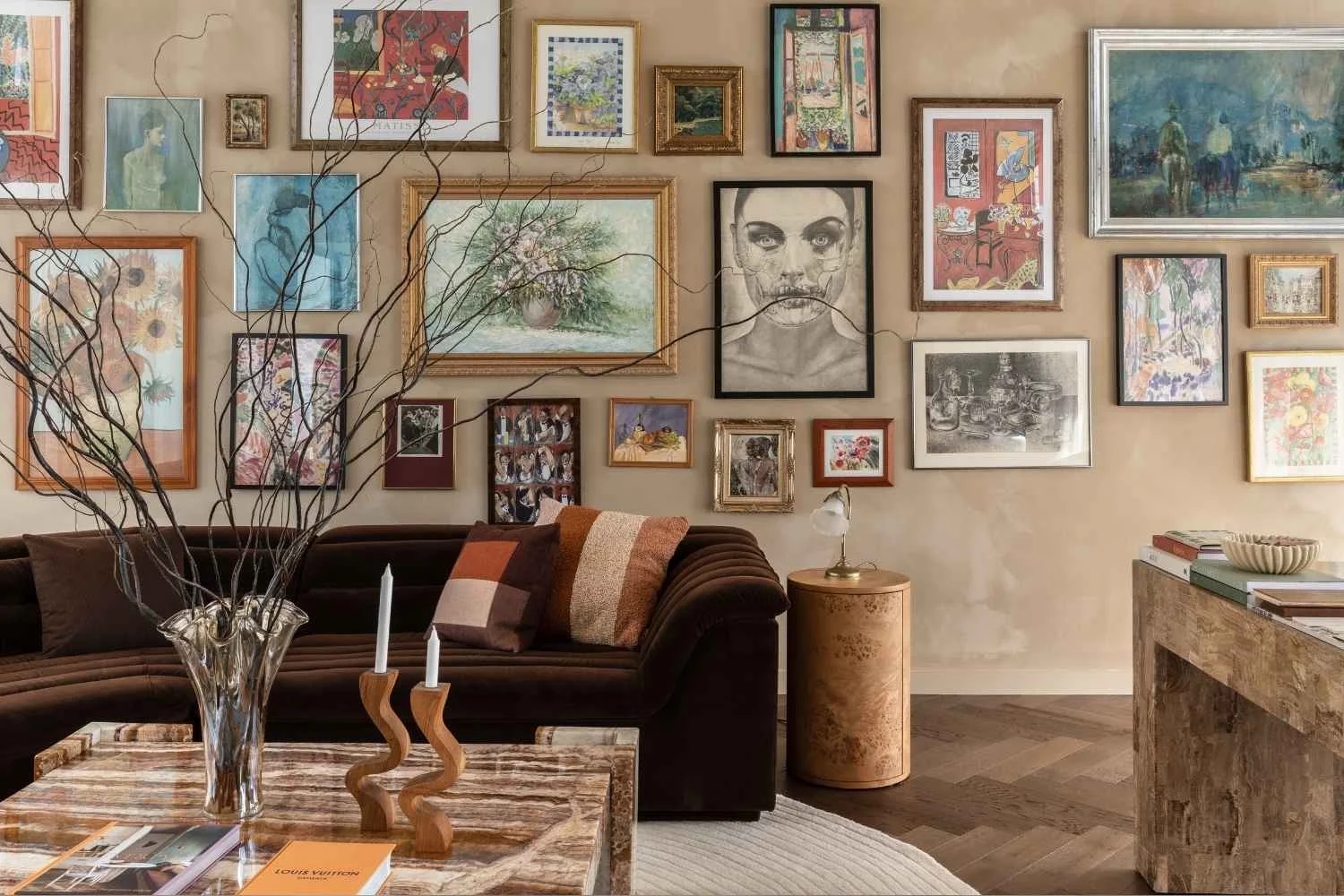
With flexible work now part of everyday life for many Kiwis, home offices have moved beyond makeshift corners and become intentional spaces. In fact, recent data shows that over 30% of New Zealanders work from home at least part of the week.
Whether you’re setting up a permanent workspace or designing a creative nook for side projects, your home office should support both focus and inspiration. From layout and lighting to comfort and storage, these home office ideas will help you create a space that works beautifully, no matter the size.
Home Office Layout
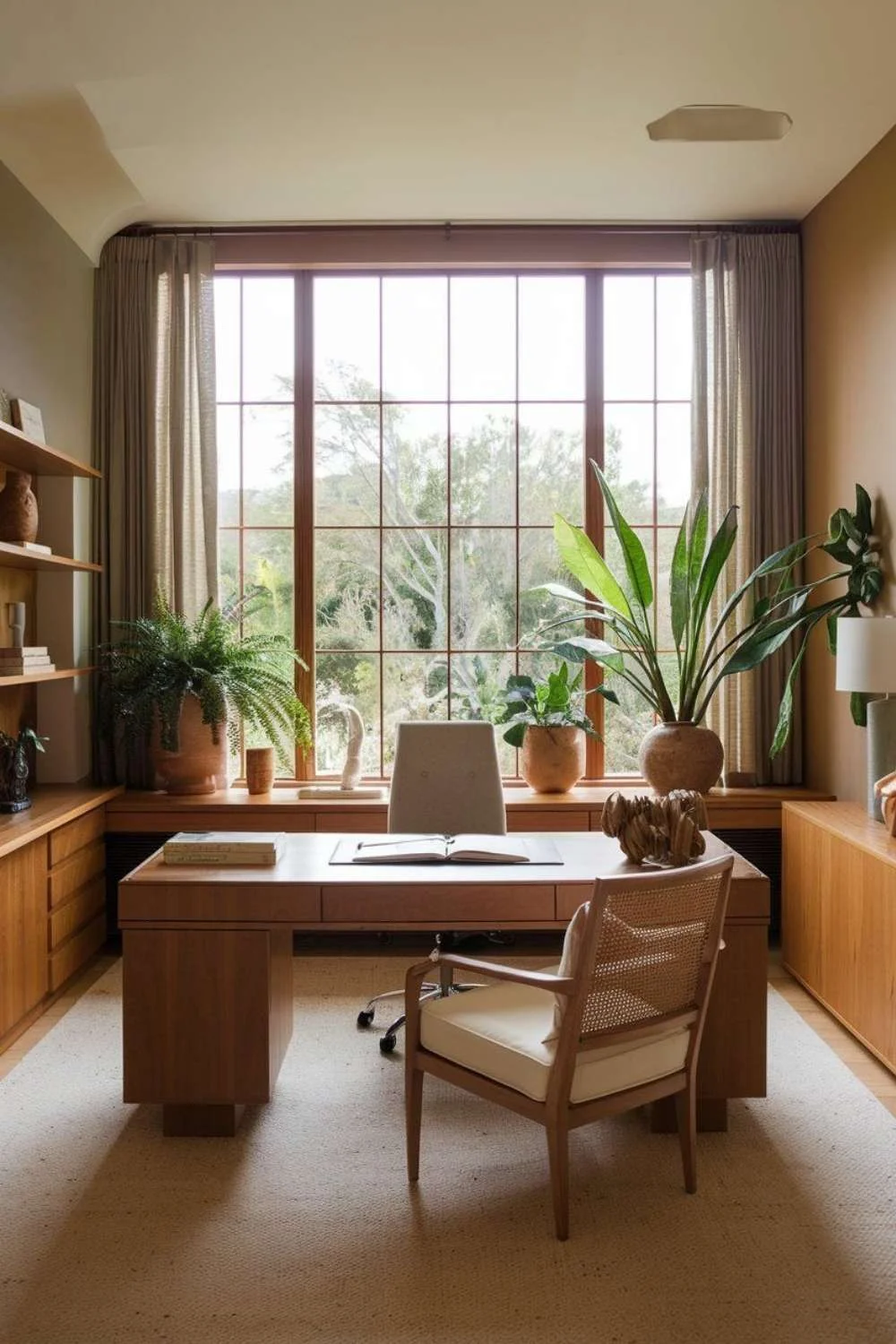

To find the perfect layout for your home office, consider how you move through the space. Is there a calm area with good light and minimal distractions? Placing your desk near a window helps harness natural light, improving concentration and wellbeing while providing a visual break from the screen.
Keep your essentials close to hand, and if space allows, consider introducing zones: a seated desk for focused work, a standing bench for stretching your legs, and a comfy armchair for reading. In shared or multifunctional rooms, anchor your workspace with a rug, a half-wall shelf, or a contrasting paint finish to subtly signal the shift from living to working without overwhelming your home office design.
Storage & Organisation
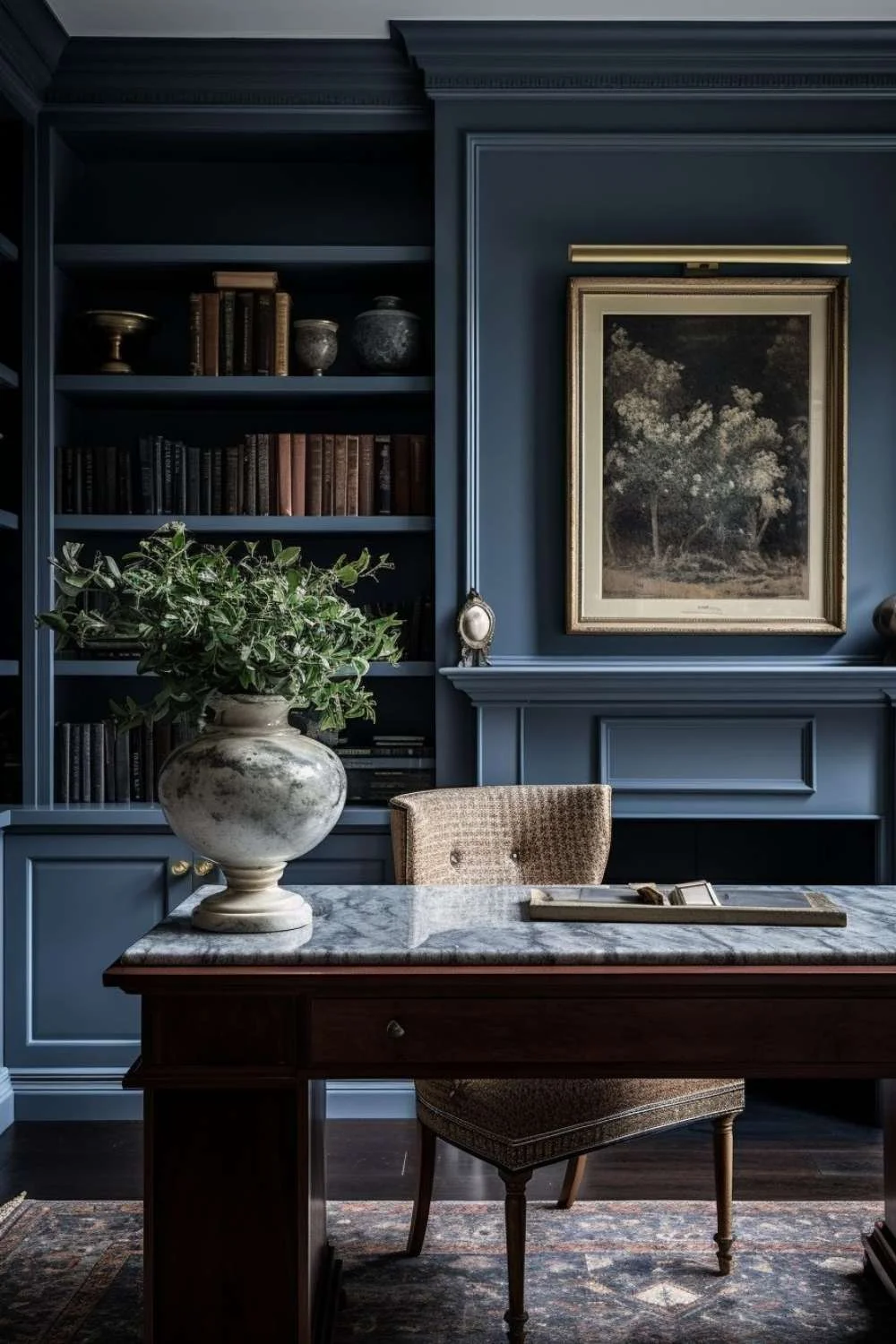
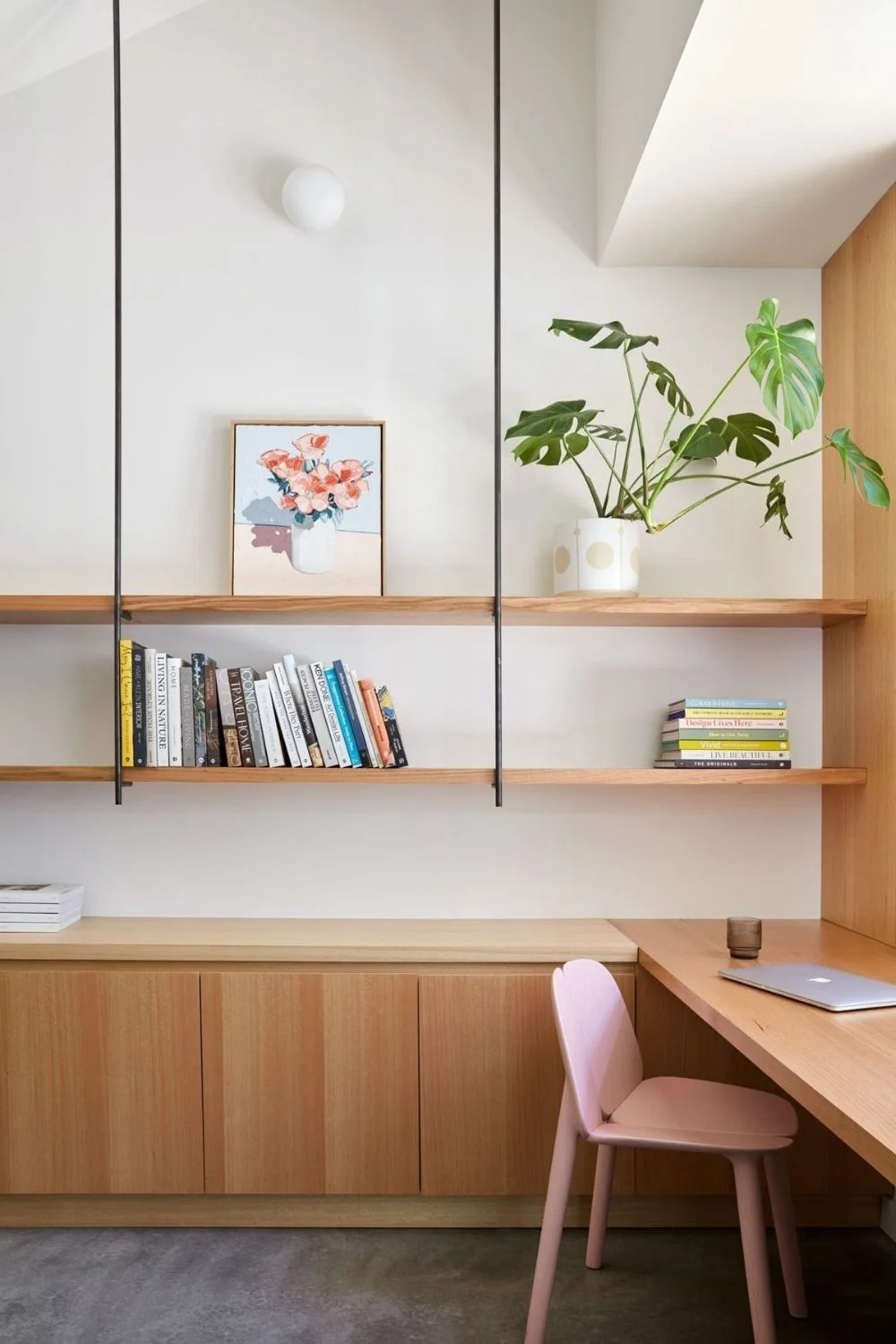
Calm surroundings help create a calm mindset, and many of the most effective home office ideas start with smart, intentional storage. Use open shelving to keep everyday items accessible or showcase books and artwork that inspire you. At the same time, use closed cabinetry to keep distractions like cords, printers, and paperwork neatly out of view.
Drawer inserts, wall-mounted organisers, and modular storage systems can all help your workspace feel composed and considered. Cabinetry hardware also plays a part — think brushed metal finishes or architectural forms that bring subtle sophistication to cupboards and drawers.
Lighting & Mood
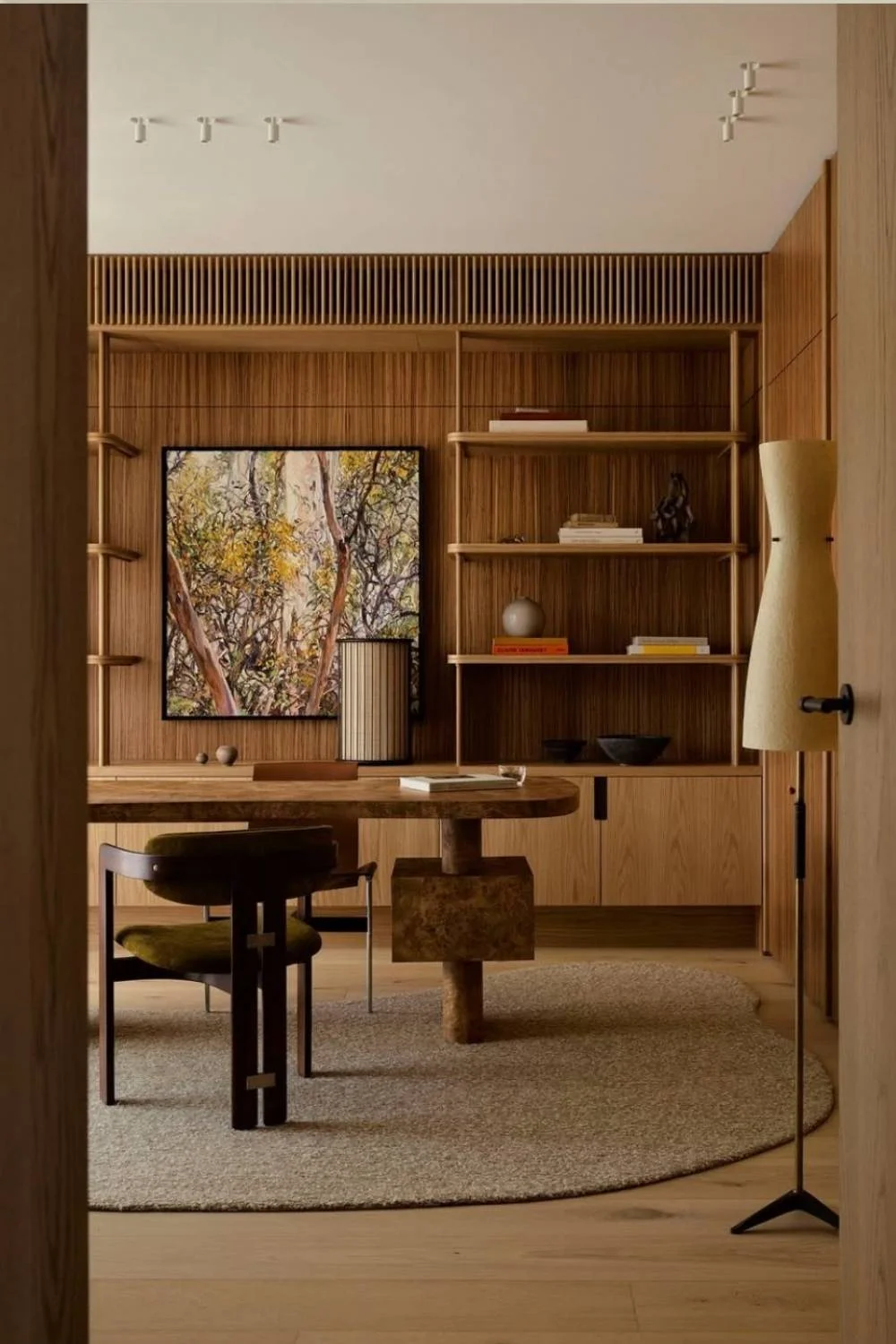
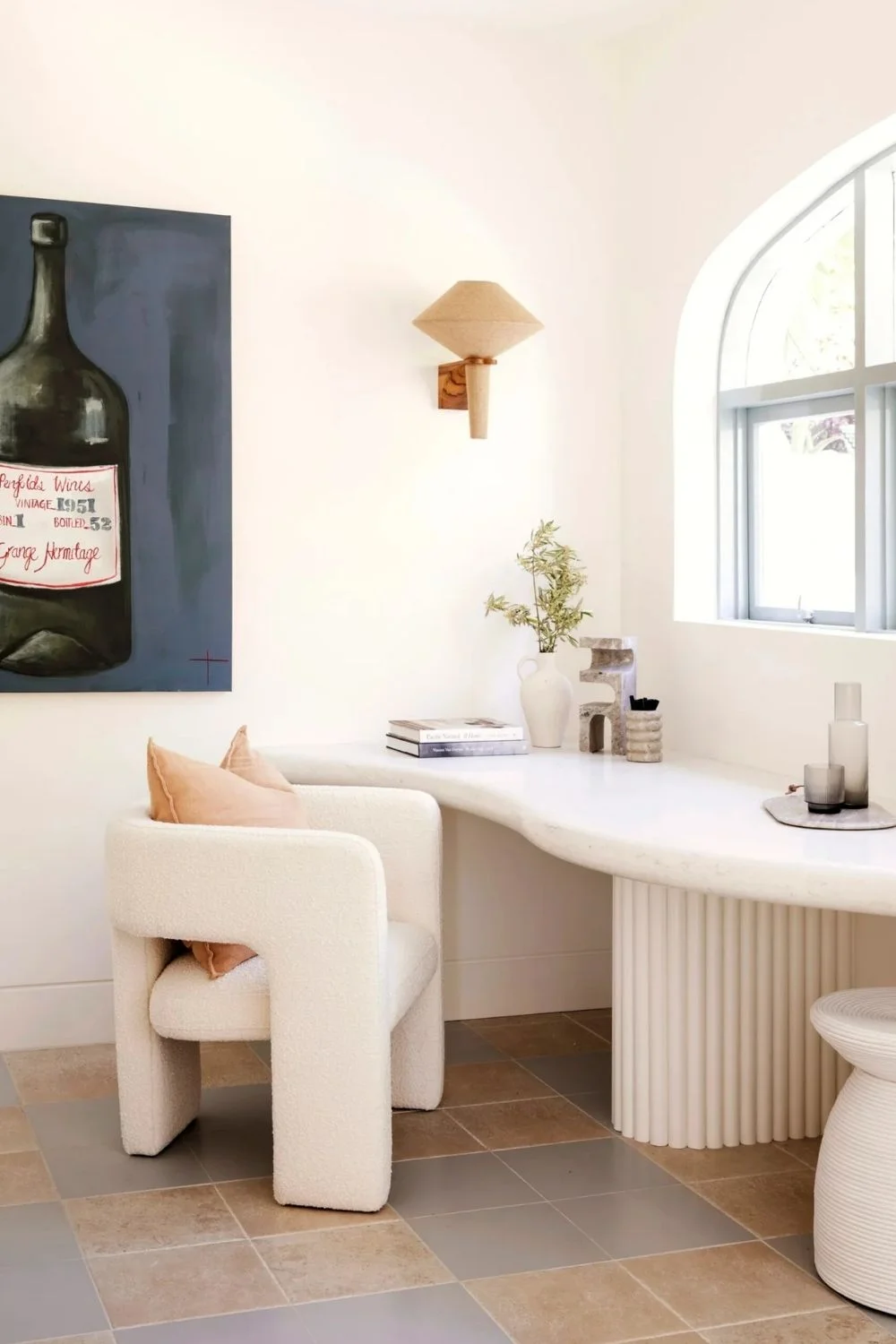
Lighting can influence everything from energy levels to eye strain, making it a fundamental element in home office ideas.
Begin with a base of ambient lighting to create warmth and balance throughout the space, then layer in focused task lighting at your desk to support concentration where it’s needed most. A slim, adjustable lamp can offer targeted illumination without overwhelming the space.
For early starts or late finishes, consider soft, atmospheric additions — like a dimmable table lamp or wall sconces — to shift the mood and ease transitions. And don’t underestimate how lighting interacts with materials: soft neutrals, warm metals, and natural textures reflect and diffuse light in ways that subtly elevate the overall tone of the room, without relying on harsh or clinical brightness.
Colour Psychology
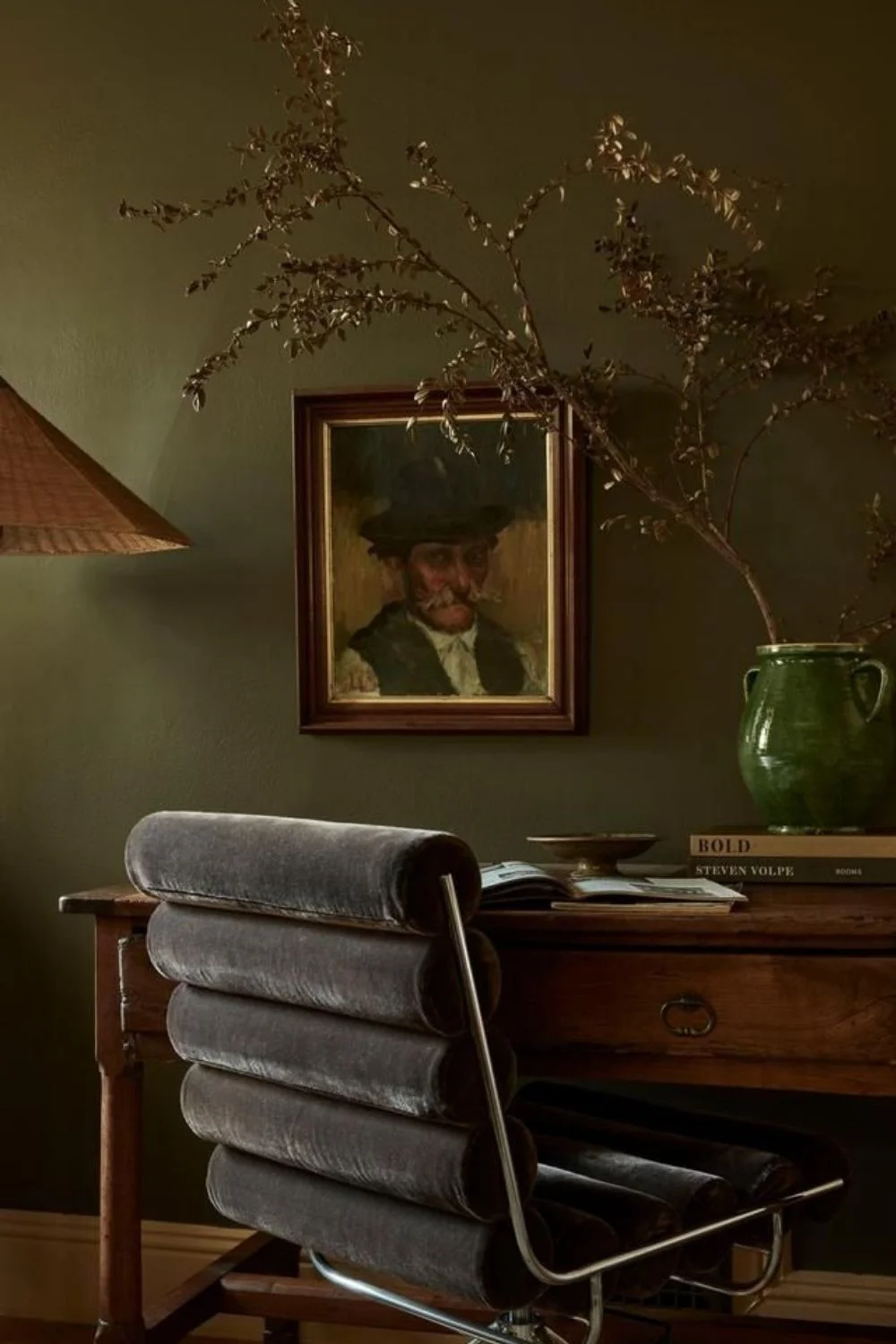

Colour has the power to influence both mood and mindset, subtly shaping how you experience a space. Your home office design offers the perfect opportunity to experiment with tones that encourage calm, clarity, or creative flow.
- Soft neutrals and warm whites offer clarity and spaciousness, creating a blank canvas for productivity. They’re ideal for multifunctional or minimalist spaces.
- Greens, especially sage, olive, and eucalyptus tones, are known to support concentration and a sense of balance — a subtle nod to nature that promotes calm.
- Blues can encourage mental clarity and are often used in spaces requiring focus and precision. Lighter blues soothe, while deeper navy tones add a sense of stability.
- Pale terracottas, blushes, or dusty peaches can help spark creativity without being overstimulating, especially when paired with timber textures or natural stone accents.
- Charcoal and inky hues, used sparingly, can add mood and depth to a study nook, ideal for small spaces where you want to feel cocooned.
Apply colour through paint, textiles, joinery, hardware, or decorative accents, and consider how the palette plays out under different lighting conditions throughout the day.
Comfort & Personalisation
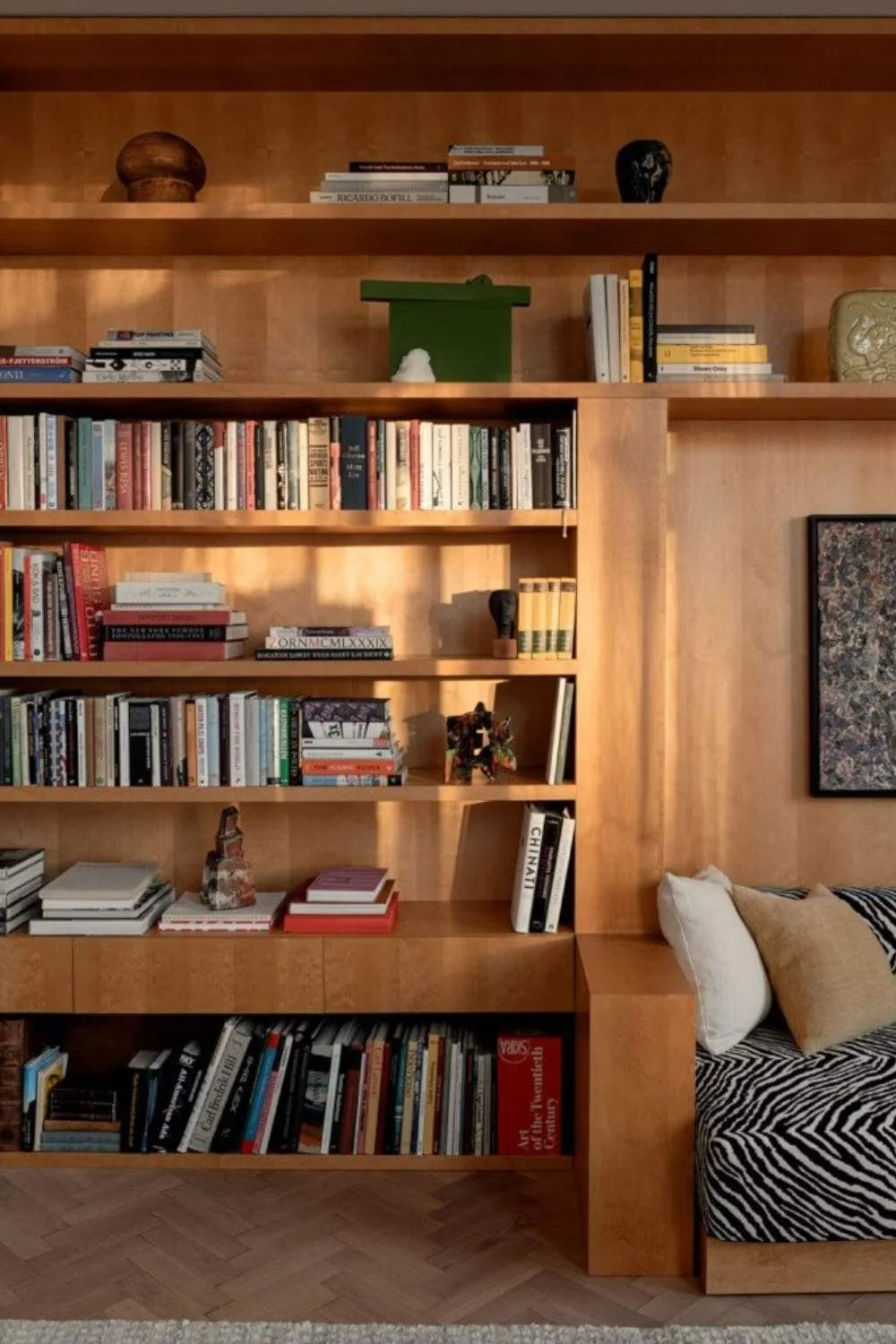
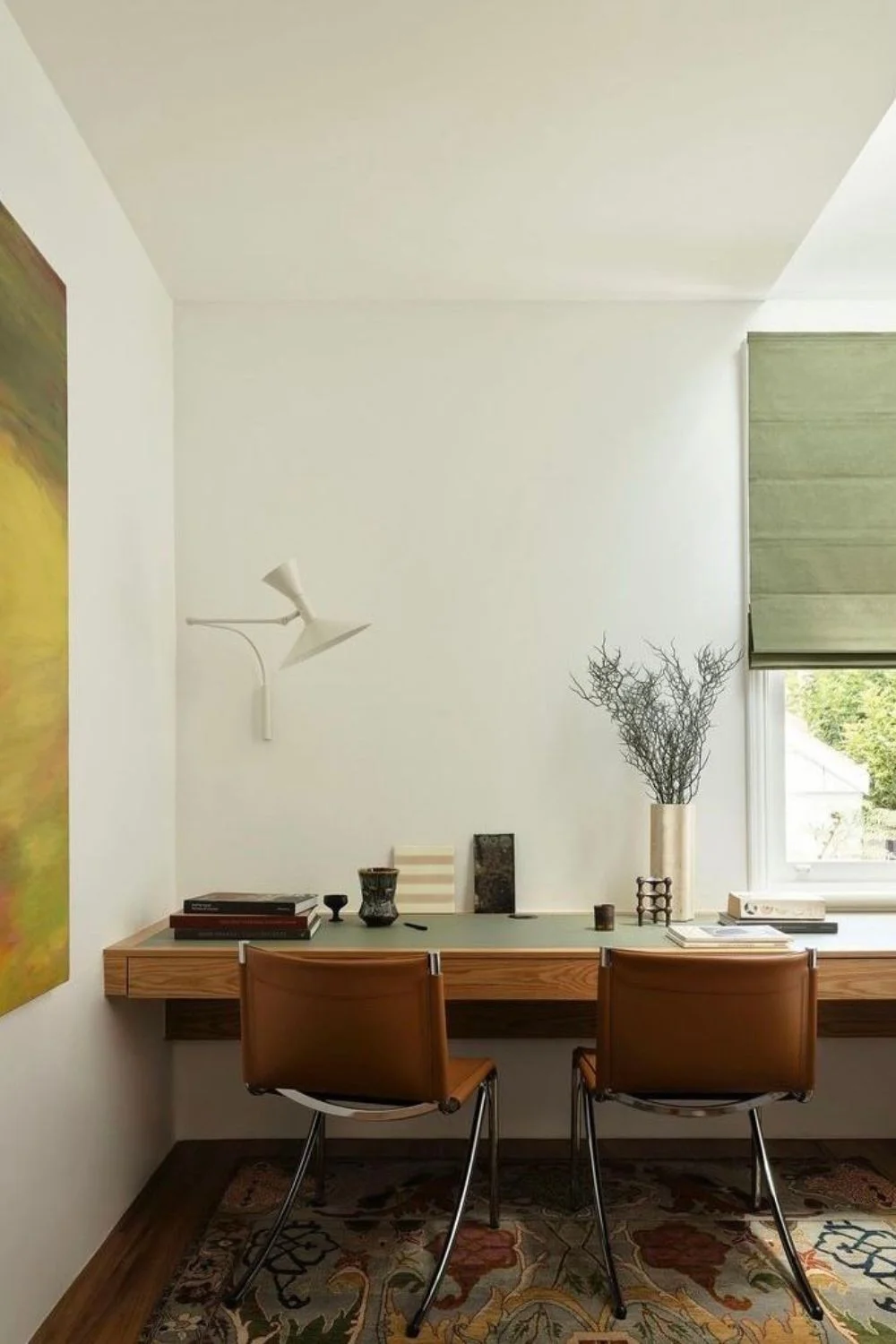
An effective home office shouldn’t just look good — it should feel good too. The chair you choose matters, but so too does the quality of materials you surround yourself with.
Infuse your workspace with objects that reflect your personality, like a ceramic vase, framed art, or a piece collected on your travels. Layered textures — think a soft rug underfoot, linen curtains that gently diffuse light, or a wool throw draped over your chair — can add warmth, tactility, and acoustic softness to your environment.
When exploring modern home office ideas, climate control is a detail that’s often overlooked. A well-ventilated space with access to fresh air can boost alertness and reduce fatigue. Where that’s not possible, a quiet fan, an air purifier, or even a window you can open can help you maintain a clear head throughout the day. Scent can also influence mood and focus; a diffuser with grounding essential oils or a softly scented candle can introduce a sense of calm and clarity.
Incorporating biophilic elements, such as indoor plants, natural stone, timber, or linen, can also elevate the sensory experience of your workspace. Greenery not only purifies the air but has been shown to reduce stress and improve concentration.
Technology
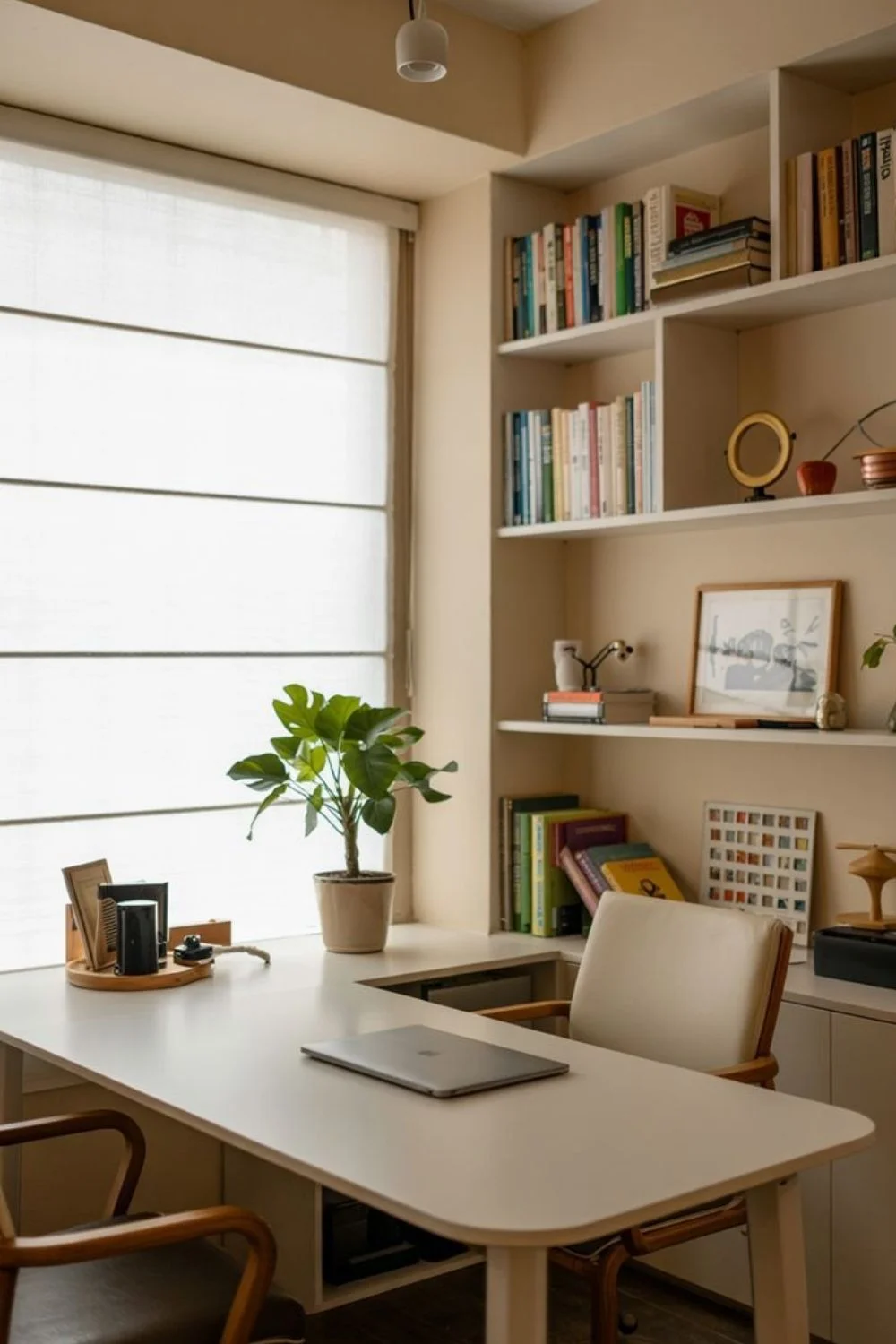
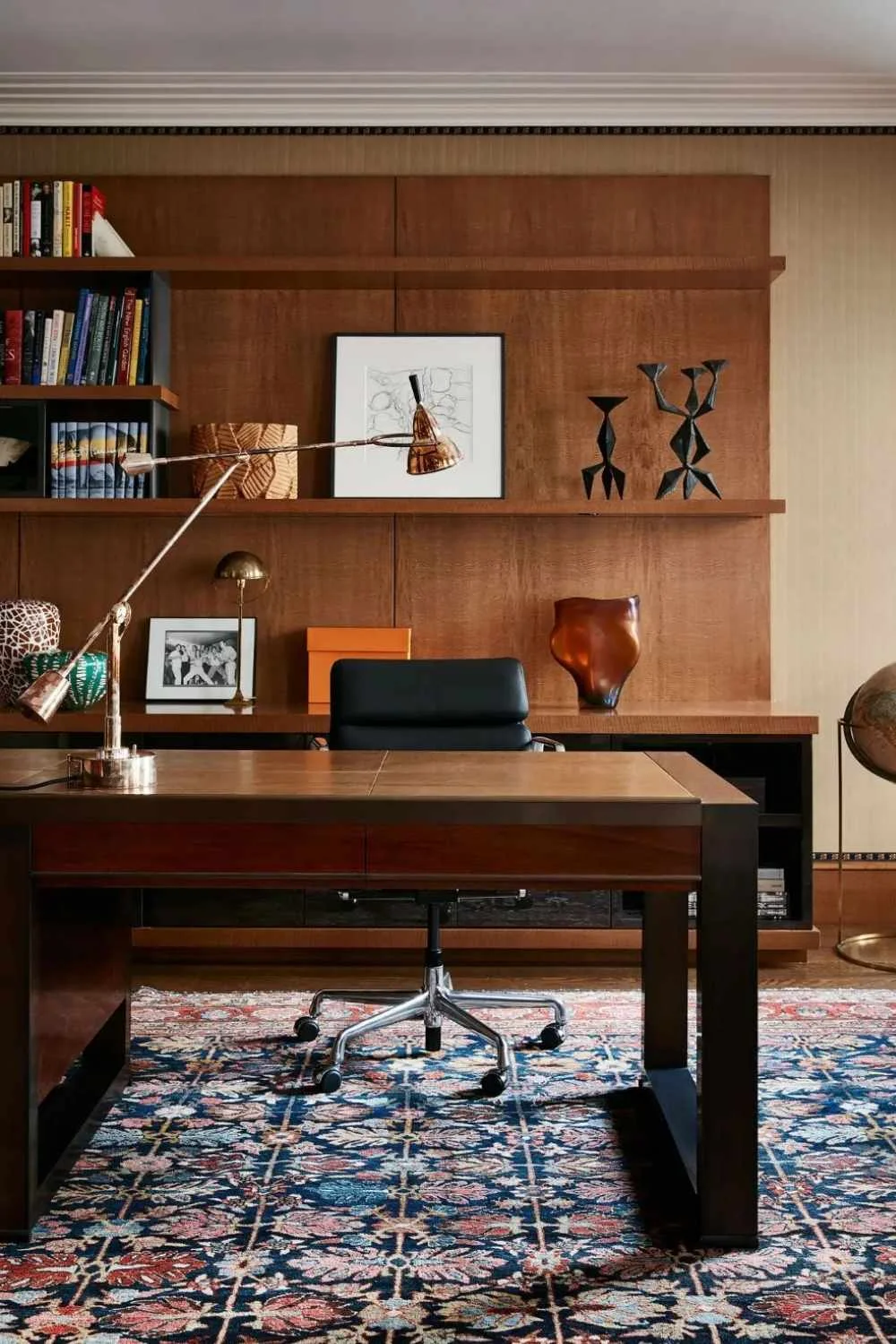
When it comes to practical home office ideas, technology often does its best work behind the scenes — shaping not only how efficiently you operate, but also the mood of your space. Beyond fast Wi-Fi and a dependable computer, it’s the smaller tech choices that can elevate your daily experience.
If you work primarily from a laptop, consider investing in a monitor to improve screen visibility and ease of multitasking — a simple addition that can make long work sessions feel far more seamless.
If you enjoy listening to background music or podcasts while you work, integrate a quality speaker into your setup. Or for a more tactile, nostalgic touch, a record player paired with your vinyl collection can bring a sense of ritual and personality to your day.
Cord management is equally important in maintaining a clutter-free environment. Ensure your powerpoints are conveniently placed in relation to your desk and tech setup. This helps avoid extension cords running across the room or tangling beneath your feet. Cable organisers, under-desk trays, and integrated power solutions will help minimise visual distractions and ensure your workspace remains functional and aesthetically cohesive.
Home Office Ergonomics
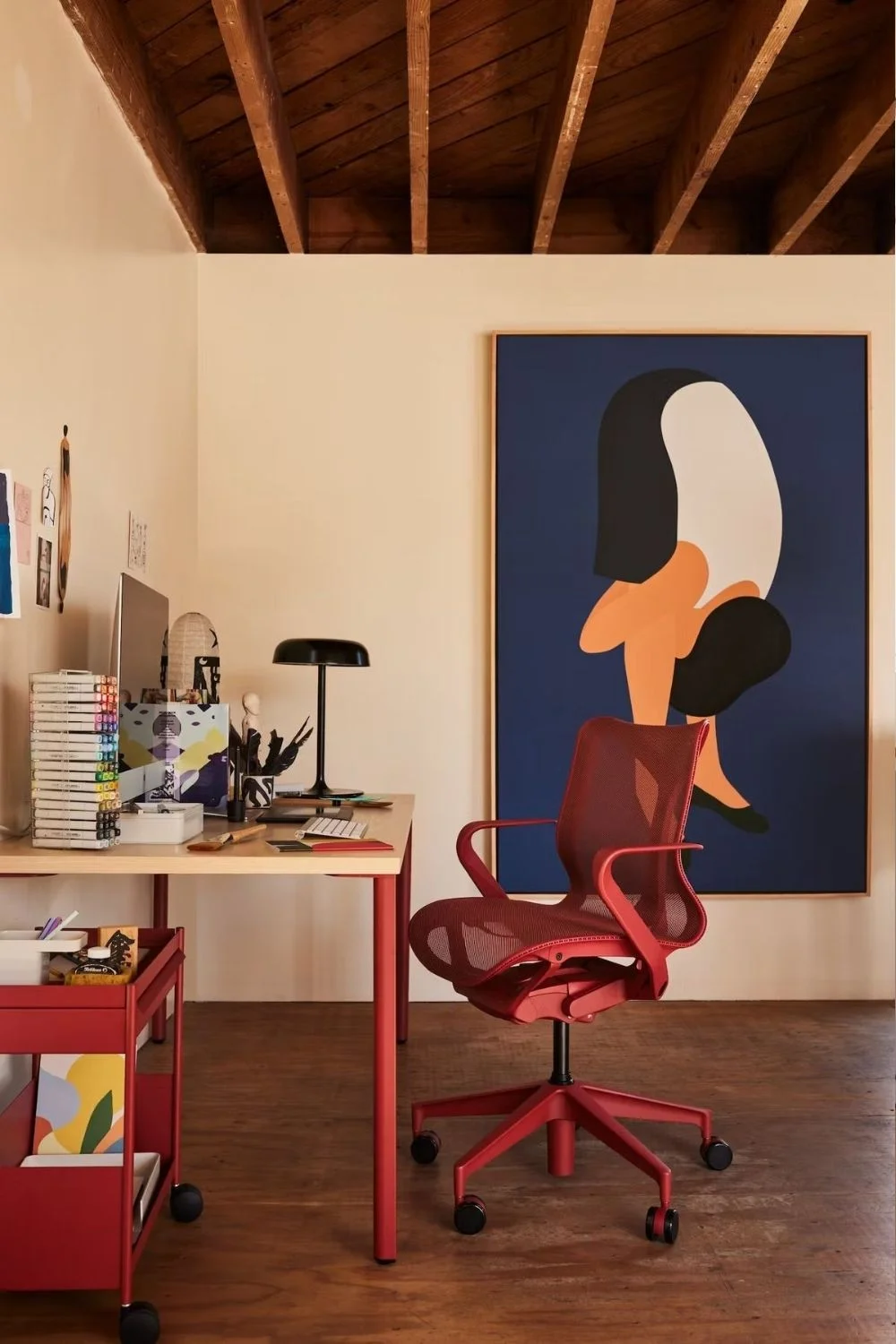
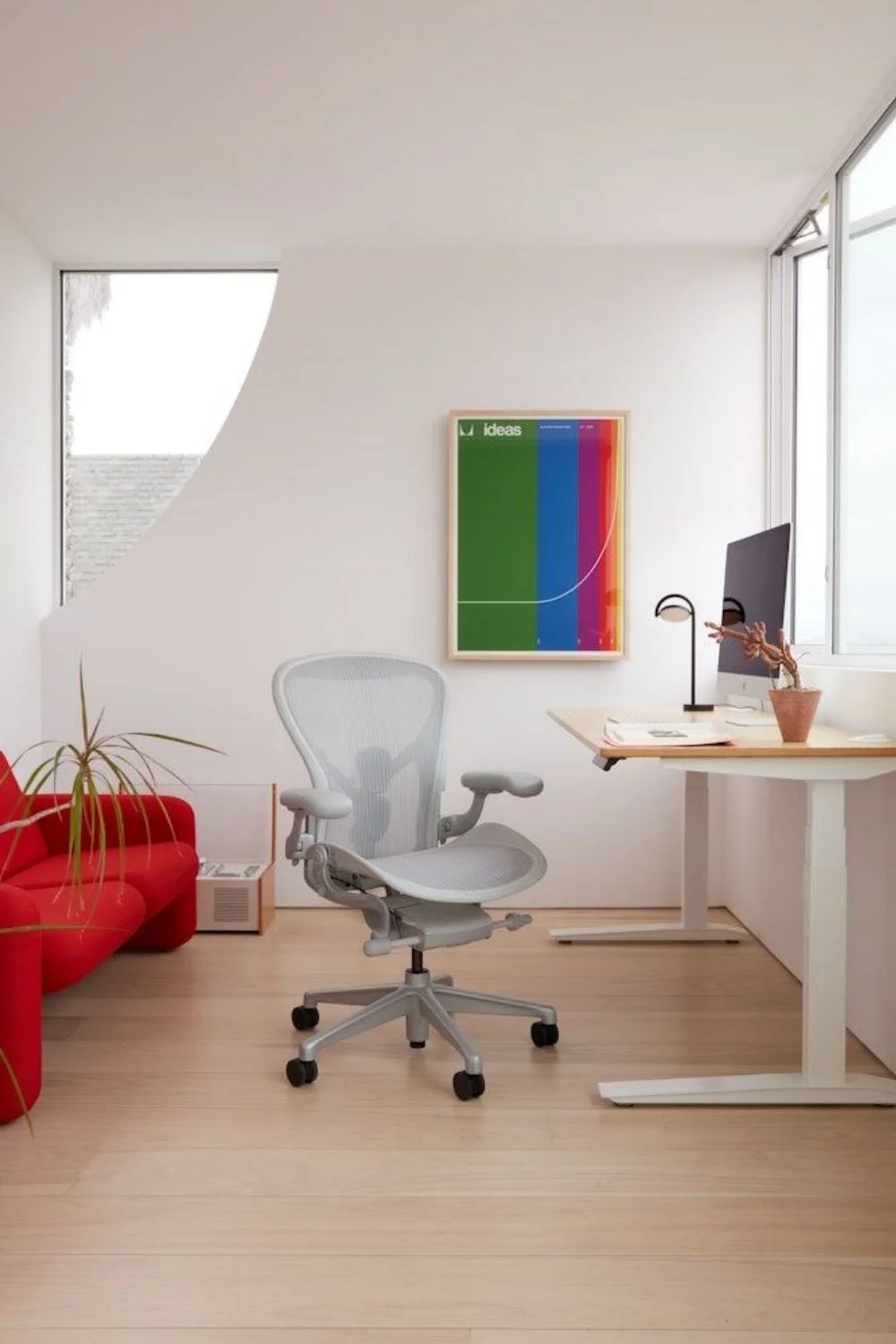
Designing for comfort begins with how your space supports the body. A well-arranged office allows your workflow to unfold naturally, without strain or disruption — a subtle harmony between posture, movement, and purpose. Here are a few guiding principles to help you achieve that balance:
- Desk height: Your elbows should rest at a 90-degree angle when typing, with your wrists in a neutral position.
- Monitor position: The top of your screen should be at or just below eye level. If you have two screens and use them equally, position them side by side at the same height and angle, with the centre point aligned directly in front of you. If one is used more often, place it directly in front of you and angle the second slightly off to the side to reduce constant head turning.
- Chair support: Use a chair with adjustable height and lumbar support that follows the natural curve of your spine.
- Movement: Shift positions regularly throughout the day. Even small changes like standing during calls or using a sit-stand desk riser can make a big difference.
Small Home Office Design Ideas
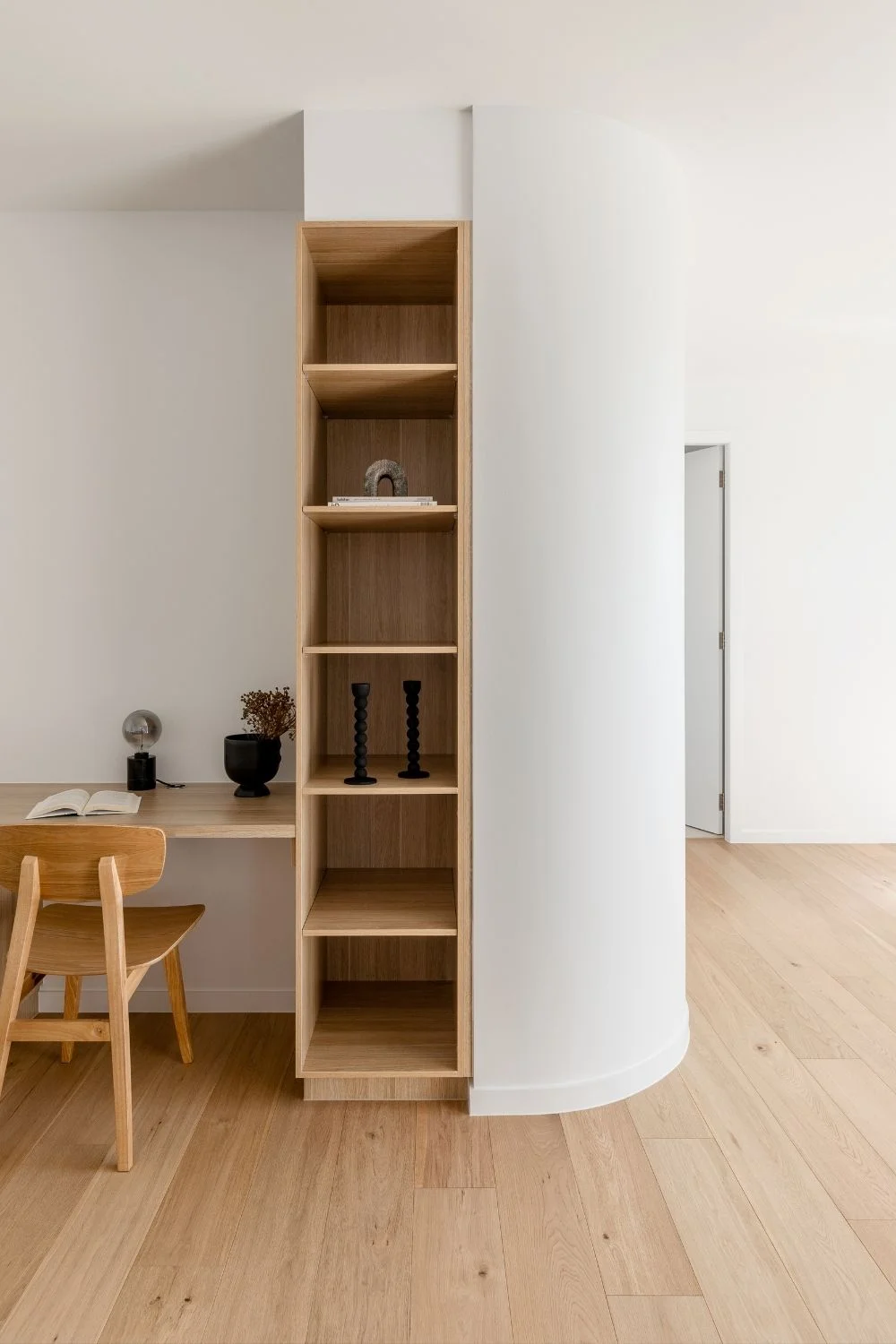
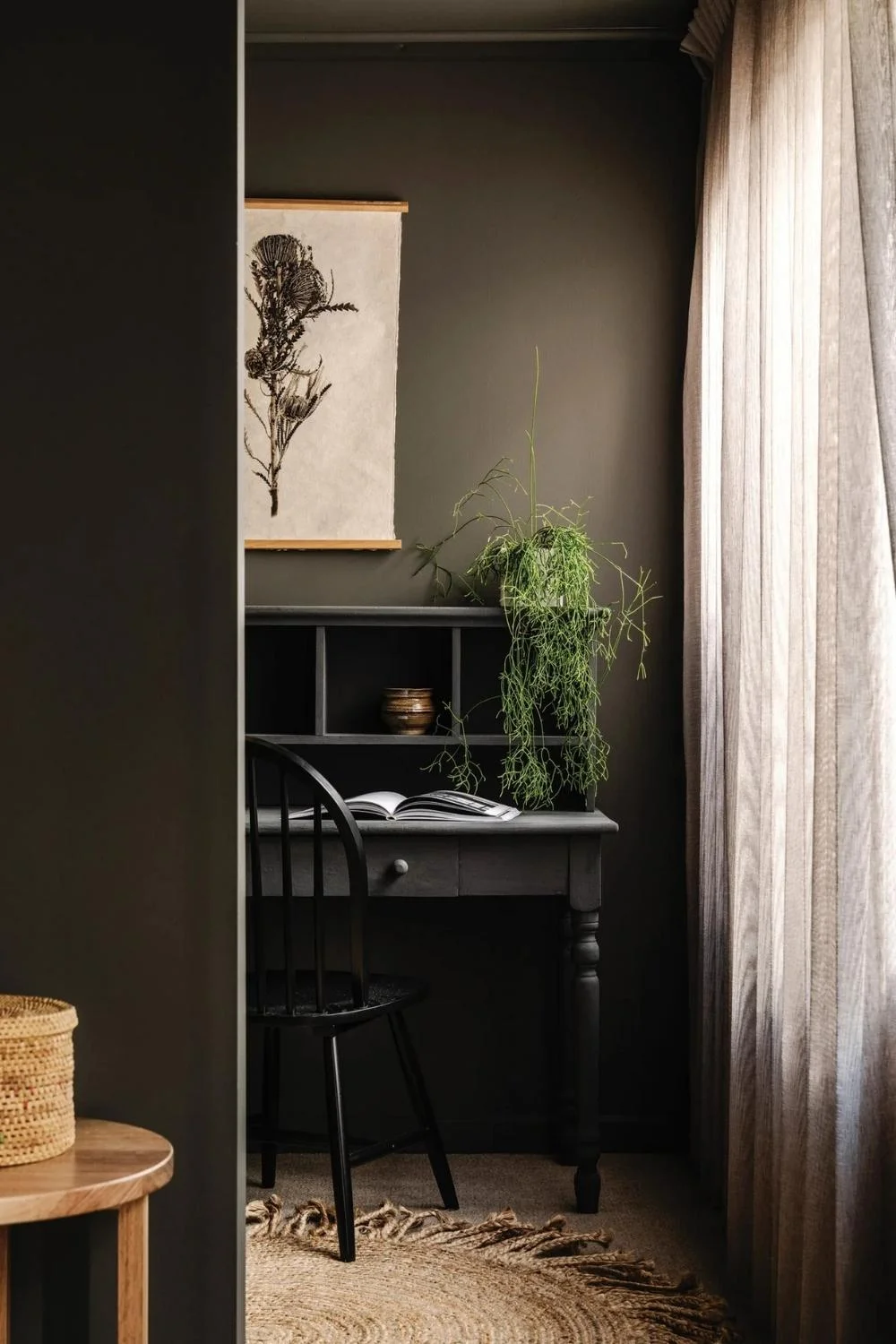
A dedicated home office doesn’t always require an entire room. With the right elements, even a compact corner can become a functional and beautiful place to work.
- Fold-down or wall-mounted desks are ideal for tight areas.
- Vertical storage (think shelves, pegboards or cabinetry to the ceiling) keeps essentials within reach without consuming floor space.
- Neutral tones and reflective surfaces help open up the area visually, making it feel lighter and more expansive.
- Integrated joinery can conceal office functions when not in use — perfect for bedrooms or open-plan zones. Opt for slimline cabinetry hardware and integrate power points for a refined, custom feel.
Designing your home office is more than creating a place to work; it’s about crafting a space that energises you, reflects your aesthetic, and enhances how you live and work each day. With thoughtful home office ideas and a clear sense of purpose, your workspace can become one of the most inspiring areas in your home.
Looking for more home inspiration? Read these blogs:
How to Design Your Perfect Home Library
 Our Range
Our Range 





















































